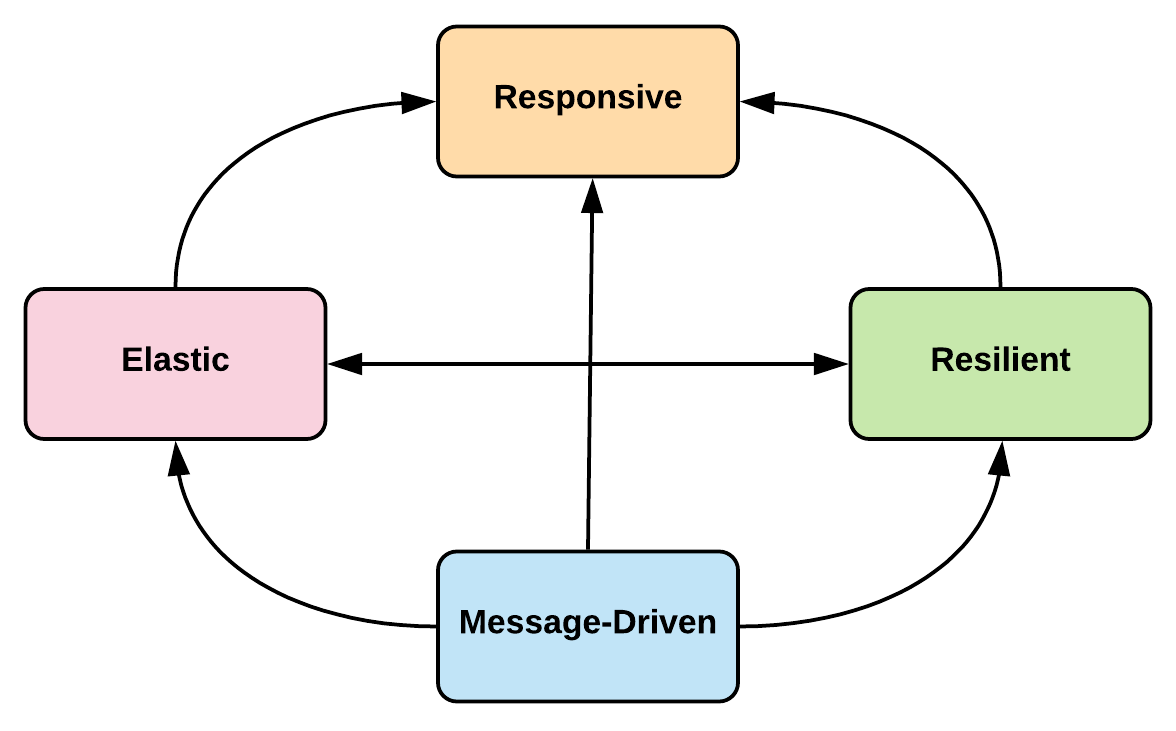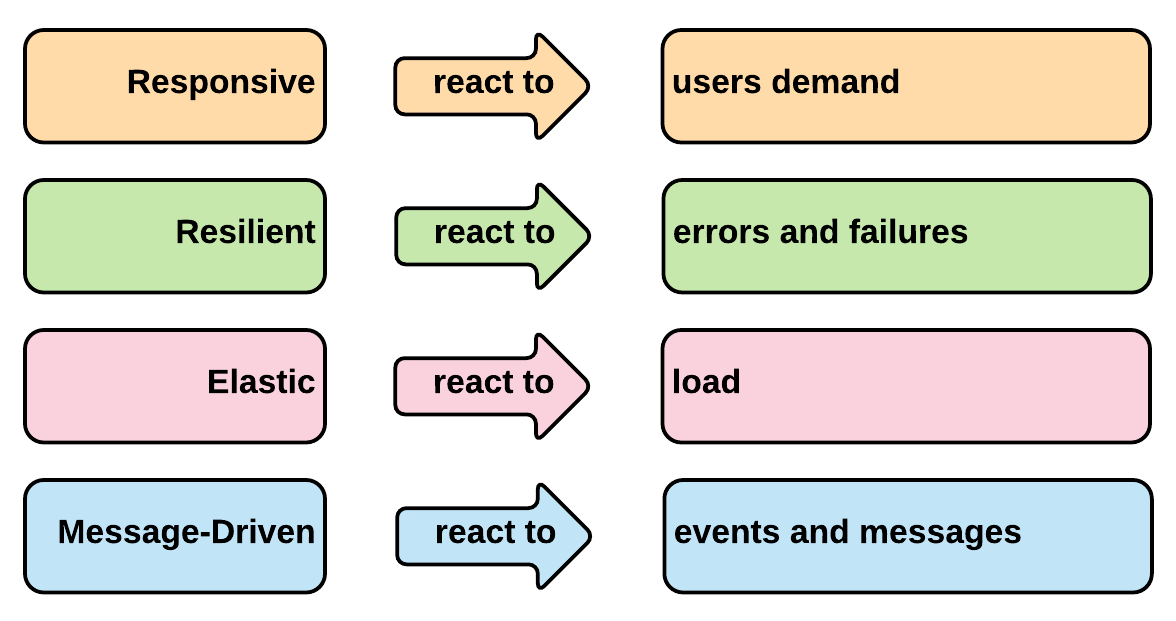In reactive applications, one of the main aspects is the usage of asynchronous messages to pass data from one component to another. This brings loose coupling between components and aids in achieving location transparency (as long as the component is reachable/discoverable, it can reside in a single node or a cluster of nodes anywhere). Create a message, publish, and forget. Registered subscribers receive the message, process it, and broadcast the message for the other subscribes to do their jobs. This is one of the core aspects of reactive programming and it is one of the fundamental aspects needed for a reactive system. This fire-and-forget concept brings in a non-blocking way of communication, resulting in highly scalable applications.
The following diagram (Figure 1) clearly shows the Reactive Manifesto in a pictorial fashion. It also clearly shows the relationship between the main concepts on the Reactive Manifesto:

Since reactive applications are responsive, resilient, elastic, and message-driven, these applications are inherently highly flexible, highly scalable, loosely coupled, and fault-tolerant.
Mateusz Gajewski, in one of his presentations shared on www.slideshare.net, sums up the Reactive Manifesto in a very nice way:

